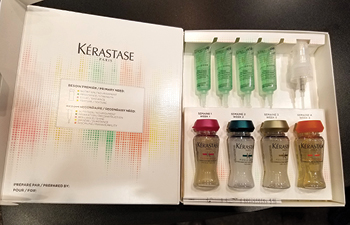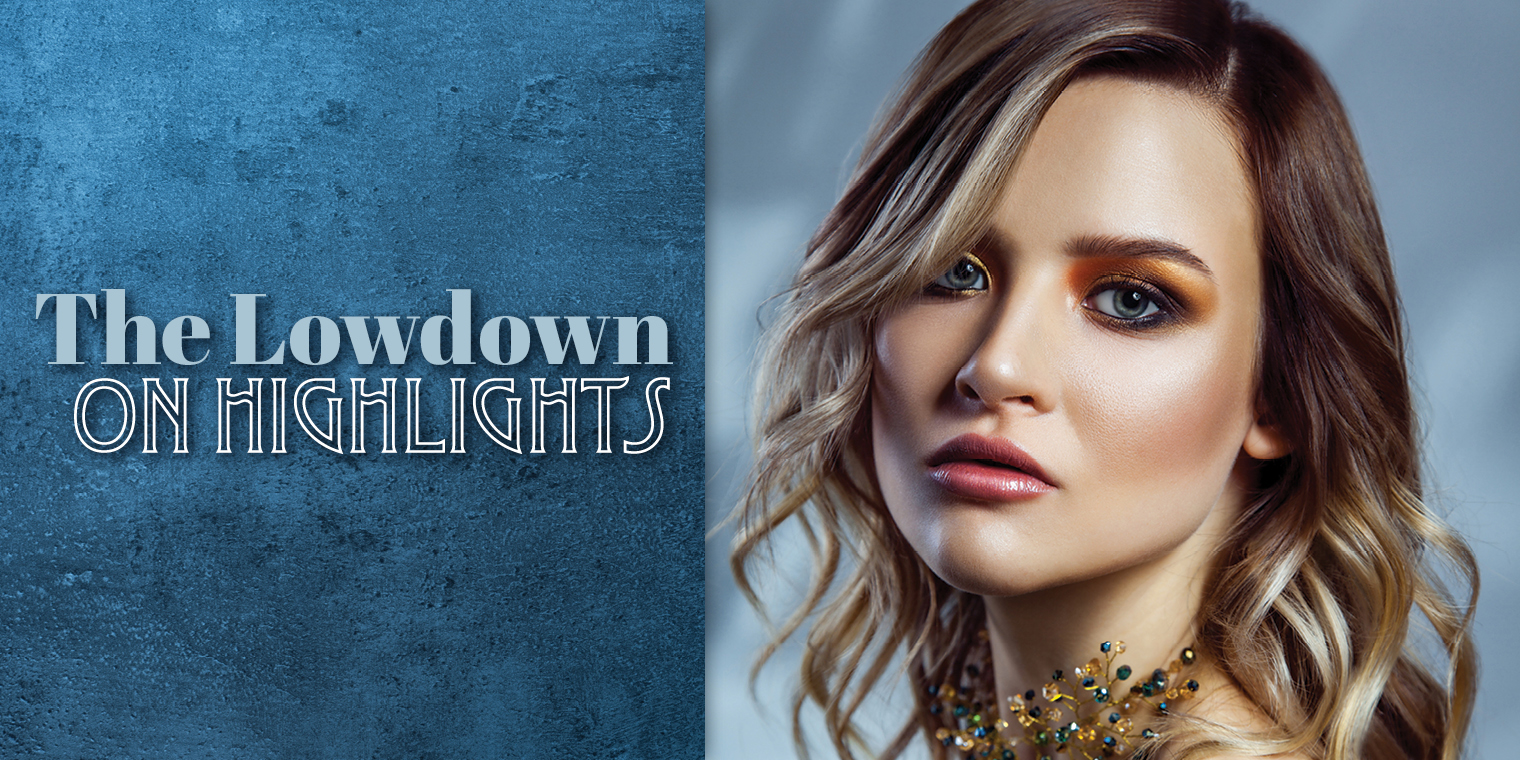Highlights add dimension, depth and brightness to hair. If you want to know the latest trends and techniques, how to care for your highlights, or if you’ve never had them and don’t know where to start, we can help. We talked to Tania Ferrel-Saldana, American Board Certified Haircolorist and founder of Colour Bar Studio in Tysons, to find out the facts about highlighting.
The Techniques
Instead of changing your hair color using an all-over, one-color process, highlights add color only to sections of hair. They can be placed all over, used to frame your face or to accent aspects of your haircut. Today, salons offer two types of highlighting, foils and balayage.
With foil highlights, the colorist takes a thin section of hair, lays it on a piece of foil, paints the section with color and folds the foil over to keep the section separate from the rest of the hair. The heat induction provided by the foil also helps the lightener lift the color higher. Foil highlights lighten hair from the root to the end, which leaves a clear line of regrowth, so you need to go in for a touch up every six to eight weeks.
One variation on foil highlights is babylights, which uses very small sections of hair—sometimes just a few strands. Another option using foils is a combination of highlights and lowlights to lighten some sections while adding richer, darker hues to others.
Balayage is a freehand technique that is applied on the surface of a section of hair starting about an inch from the roots and getting thicker as it reaches the ends of the hair. The highlights are less systematically placed and result in a softer, more natural look.
“Balayage is a lot more freehand and customized,” said Ferrel-Saldana. “It also takes less time to do it, and it needs less maintenance since the regrowth isn’t as noticeable.”
The Trends
Ferrel-Saldana said a lot of clients are asking for the tiger eye look. Like the tiger eye gemstone, this style features a soft mix of rich brown, golden and bright hues.
The ombre trend—an all-over style of darker hair at the crown that gets lighter or changes to a different color toward the ends, resulting in hair that looks like it has been dipped in color—has sparked a softer version called sombre, where the color change is more subtle.
Sometimes getting the look you want means mixing techniques, such as adding some babylights along with balayage.
Consult with a Professional
With all the different techniques, it’s important to go to a good hair colorist with training and experience to guide you. Certified hair colorists go through some pretty intense training, and they not only know how to match color to your skintone, but they know how to mix formulas to suit your hair’s porousness and texture.
Kits purchased in the store to use at home are one-size-fits-all solutions, so the color and formulations aren’t customized for your hair. You may not get the right shade, and you can damage your hair because the products are much harsher than those used in the salon. Of course, even with a friend helping you, it’s very hard to apply highlights like a professional.
“We do a lot of fixing,” said Ferrel-Saldana. “The products used at home are more damaging, and most people don’t have the expertise to get the look they want. We do at least one color correction every day. As a hairdresser, you use products that are best for the hair, because your name is on that hair.”
Ferrel-Saldana stresses the importance of having a consultation with your colorist. She suggests bringing in pictures of looks you like to show your stylist what you want. “If you go to a salon and they don’t give you a consultation, you should leave,” she said. “You should always have a consultation so you and your stylist know your expectations. I think a lot of mistakes by hairdressers are because there’s not enough communication.”
Caring for Your Highlights
 “I always suggest that after you get highlights, you get a protein treatment or even Olaplex,” said Ferrel-Saldana. “Protein will give it strength, and Olaplex helps restore hair from the inside out to strengthen, condition and reconnect the hair strand structure.
“I always suggest that after you get highlights, you get a protein treatment or even Olaplex,” said Ferrel-Saldana. “Protein will give it strength, and Olaplex helps restore hair from the inside out to strengthen, condition and reconnect the hair strand structure.
“When you get highlights, you remove a lot of color, so you put a lot of stress on the hair. I always follow up highlights with a moisturizer and tell clients to condition their hair every time they shampoo.”
Ferrel-Saldana recommends Kerastase and Oribe products. Oribe offers a whole line of very high quality, high performance hair care products. Ferrel-Saldana puts together customized Kerastase kits for her clients that treat hair for four weeks after applying color.
Before you highlight, find photos of results you like, take them with you when you consult with a professional to find the right technique and shades for you, and keep your highlights looking their best by restoring protein and moisture to your hair.






